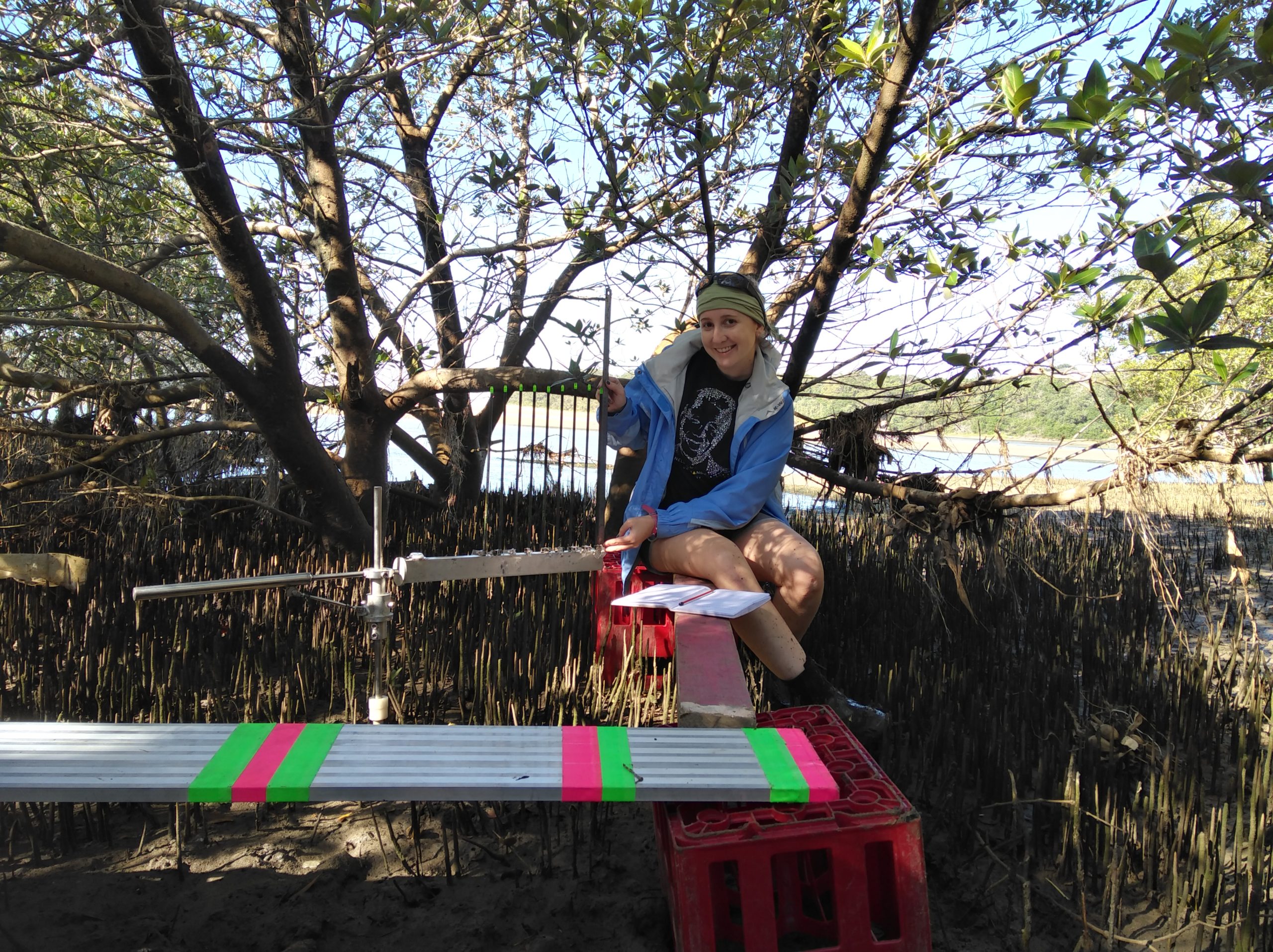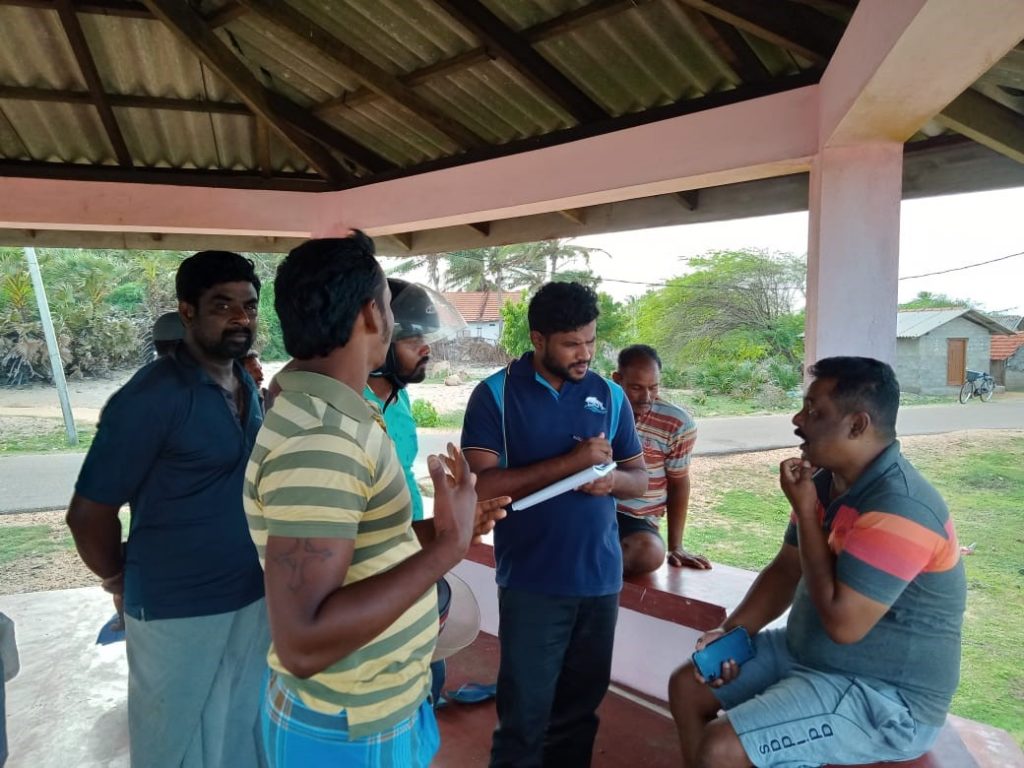Blue carbon refers to organic carbon that has been captured and sequestered by coastal marine plants. Blue carbon ecosystems include mangroves, seagrasses and tidal marshes and also support a diverse array of marine life.
Incredibly, blue carbon ecosystems lock-up 40 times more organic carbon than terrestrial ecosystems when compared per unit area. Preserving global blue carbon is one option in our actions against climate change.
Blue carbon and the Indian Ocean
The Indian Ocean region has almost half the world’s mangroves, but only has 13 per cent of the world’s coastline. These areas support a large population with 37 per cent of the world’s people who rely on the coastal resources.
These coastlines are vulnerable to natural disasters and the effect of climate change.
Lives and livelihoods depend on the health and productivity of these blue carbon ecosystems. But these valuable ecosystems are being lost.
In collaboration with the Indian Ocean Rim Association (IORA), we have established the Blue Carbon Hub. The Hub undertakes research to learn about, protect and restore blue carbon ecosystems throughout the Indian Ocean. The research enhances livelihoods, reduces risks from natural disasters, and helps mitigate climate change.
Meet three early-career visiting scientists from the IORA Blue Carbon Hub who are tackling blue carbon challenges in their home countries.
Dr Jaqueline Raw: Modelling the future impacts of climate change on tidal marshes

Dr Jackie Raw in the field measuring responses to Sea Level Rise using a Rod Surface Elevation Table (RSET)
Jackie is a postdoctoral fellow from the Shallow Water Ecosystems Research Chair at the Nelson Mandela University in South Africa.
Her research is investigating the impact of current and future threats associated with global climate change on blue carbon ecosystems.
Jackie collaborated with the Blue Carbon Hub to investigate the impact of future sea level rise on tidal marshes, in an urban estuary in South Africa.
“Mangroves and tidal marsh occur between the land and the sea, so they can be vulnerable to sea-level rise,” Jackie said.
“If we lose these ecosystems, the stored carbon comes into contact with oxygen and produces carbon dioxide, which re-enters the atmosphere.”
Model making
Jackie modelled future scenarios and found that by 2100, just one metre of predicted sea level rise will cause these tidal marsh habitats to change and flood nearby developed land.
This calculated rise is in the range for modelling high emission scenarios. Some models predict as high as two metres! The current rate of sea level rise on the coast of South Africa is 0.65m by 2100. Therefore, these calculations fall within the ‘business as usual’ range.
Jackie also found that it’s not too late for restoration efforts. If areas of the estuary can be restored, they can then increase their carbon sequestration potential.
Restoration of 320 hectares of desiccated salt pans to estuarine salt marsh vegetation would increase carbon stock by 15 per cent by 2100, when compared with taking no action.
“This research is vitally important for estuary management in South Africa and the Indian Ocean, but we need more long-term research in this area,” Jackie said.
“The program has greatly benefited my research skills and has particularly helped me to make new connections with experts working on blue carbon in the Indian Ocean.”
Lahiru Sandaruwan: Understanding the services these important ecosystems provide

Dr Lahiru Sandaruwan (holding the notebook) in the field interviewing local people in Sri Lanka.
Lahiru is a scientist from the National Resources and Development Agency of Sri Lanka. His work is helping people make accurate assessments of the value of blue carbon ecosystems.
“These blue carbon ecosystems are important as they provide us with a range of services called ‘ecosystem services’ which we often take for granted and create a wealth of food and livelihoods to local people,” Lahiru said.
“It can be very challenging to identify all of the services available, which causes them to be undervalued and destroyed.
“It is very important to have a better understanding of the ecosystems services. They can be used to assess the damage of environmental destruction, understand the impacts of a new development near a sensitive ecosystem, and help understand the returns when investing in restoration activities.
“My research will help provide more guidance to value and assess the services available and will enable a better valuation of the environment,” he said.
Dr Milica Stankovic: Using technology to map and classify seagrass habitats

Dr Milica Stankovic (left) working in the field in Thailand using drones to detect and distinguish seagrass species.
Milica is a post-doctoral fellow at the Seaweed and Seagrass Research Unit at Prince of Songkla University in Thailand. Her research focuses on the response of blue carbon ecosystems to climate change, focusing on seagrass ecology.
Milica combines multiple disciplines in her work. These disciplines include ecology, remote sensing and modelling. Effectively measuring blue carbon ecosystems helps her understand how to use them as a tool for climate change mitigation.
For example, she investigated the use of drones as a tool to detect and distinguish seagrass species. She also looked at ways to simplify processing and image analysis.
“There is still a huge gap of knowledge between experienced practitioners and beginners and I hope that this work will fill in the gaps for everyone,” Milica said.
Milica hopes her work will increase seagrass mapping especially in the Indo-Pacific region. This region still has limited mapping of the seagrass distribution.
“Being part of the program has improved my research skills and helped me to establish so many wonderful contacts with experts from various fields,” she said.
These IORA Blue Carbon Hub researchers are increasing our knowledge and understanding in three very different areas. They are helping to build knowledge and capacity and protecting and restoring blue ecosystems throughout the Indian Ocean.

